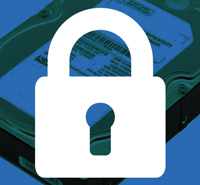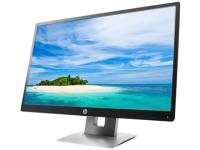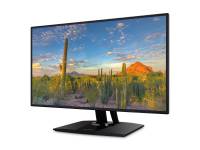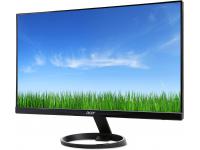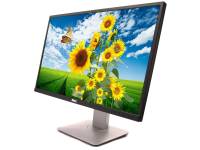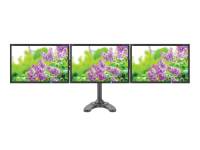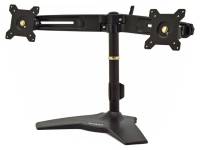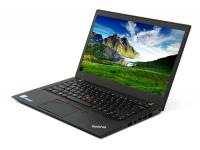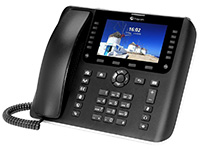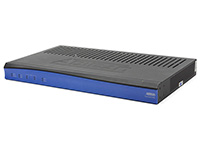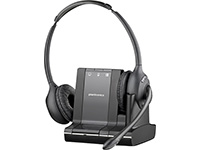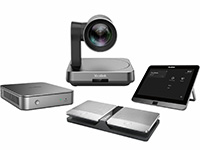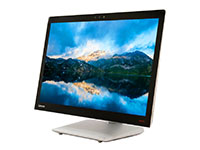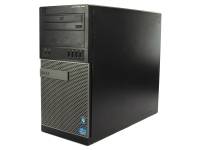
Photo by Mikael Blomkvist on Pexels
Computers are an essential tool for any home or office, with the range of work and entertainment tasks they perform. Refurbished computers are an interesting and cost-effective alternative for many who need computers but are on a tighter budget. Maintaining and optimizing refurbished computers means that they continue to operate at peak performance and can give several years of service.
We’ve put together a comprehensive guide on refurbished computer maintenance, outlining major steps to keep them going for a long time.
Understanding Refurbished Computers
The field of consumer electronics, including computers, is extremely fast-moving. New hardware and software enter the market annually, while several tech-focused conferences take place every year. In terms of buying gear, most of the attention is on what’s fresh and brand-new. But there is also an alternative path for the budget-conscious—used computers.
Refurbished computers are devices resold to the market. They are used or pre-owned devices that have gone through several major steps that put them in a “like-new” state in terms of performance. The refurbishing process typically involves device evaluation, cleaning, repair, and upgrades (if applicable).
These computers are sold at a significantly lower price than a brand-new equivalent. They have gone through rigorous testing and are vetted to have similar performance to a brand-new computer. Major computer manufacturers will have a dedicated section on their website for refurbished computers, although there are also many third-party companies that refurbish and resell computers both online and locally.
Benefits of Optimizing & Maintaining Refurbished Computers
Refurbished computers can provide you with an excellent return on your investment when they’re well-maintained and optimized. Let’s explore the following benefits:
Increased Lifespan
Maintaining and optimizing refurbished computers counteract the wear and tear that comes about from general use. Clean computers with updated software and used responsibly will last longer than dusty machines overloaded with unnecessary and/or harmful software and files.
Investing in refurbished electronics can be a smart choice for those looking to maximize value without sacrificing performance. Proper upkeep ensures these devices remain competitive with newer models while extending their usability far beyond initial expectations.
With the right amount of care, it isn’t surprising for some computers to approach 10 years, notwithstanding the expected limitations of older computers in terms of processing power and potential compatibility issues with new software.
Improved Performance
Computers run at or near the peak efficiency of their components when they are clean and well-maintained. Hot computers run slow; processing tasks generate heat, and refurbished computer performance and peak efficiency rely on its components being able to take away and dissipate heat from the processors. Computers with dusty fans and heatsinks and old dried-up thermal paste will struggle to cool itself, and performance suffers. This may not be immediately noticeable for relatively lighter tasks like word processing, spreadsheets, or internet browsing, but the performance gains come to the fore in more intensive tasks like editing photos and videos or playing games at full resolution.
Lower Repair Costs
Performing maintenance on computers lets you spot any potential issues with the computer earlier. Small issues can often be user-serviceable, which is essentially free. Bigger issues will require a visit to the computer repair shop and will cost you in terms of labor and any parts that need replacing.
Best Practices for Maintaining Refurbished Computer Hardware

Photo by JESHOOTS.COM on Unsplash
Ensuring longevity and optimum performance of hardware requires careful maintenance. Below are some of the best practices that will help you effectively do this.
Proper Cleaning
The most crucial must-clean internal component of any computer would be the cooling components like fans and heatsinks, as dust building up on these will reduce their performance. Dust also builds up on a computer’s motherboard over time, and this will also hinder a computer’s ability to shed heat.
Mouse and keyboards get the highest amount of human touch and also require regular cleaning. Depending on user habits and environment, anything can make its way deep into the internals, including food particles, spilled drinks, dust, grime, animal fur, and more. A dirty computer mouse and keyboard are a haven for bacteria. So, you’d want to always keep them clean.
Temperature Control
While you can’t do much about the built-in cooling capabilities of a refurbished computer, there are measures you can take to improve its environment for optimal temperature control.
A general rule is to give a computer room to “breathe,” i.e., place it in such a way that enough air gets to circulate around it. Not putting computers too close to walls also helps it better radiate its heat. It also helps a lot to shield your refurbished computer from direct sunlight. Avoid placing it in any spots in the house where it regularly gets hit by the sun, such as close to a window.
Surge Protection
Every electrical component and appliance is designed to run on a set voltage. Nothing kills any electrical device other than sudden spikes in voltage, which can be caused by a number of things, including lightning strikes and other disturbances to the power grid.
The typical house electrical system has its own built-in surge protector at the main service entrance, but it doesn’t hurt to double up with consumer surge protectors. These come in several types, with some models designed to be power sockets in walls and others looking like beefed-up power strips that multiple devices plug into.
Automatic voltage regulators are sometimes used together with surge protectors as an added layer of defense. An uninterruptible power supply (UPS) provides a much-needed power source that buys you enough time to save your work and shut down safely in case of blackouts.
Software Optimization Tips

Photo by Fabian Irsara on Unsplash
Optimizing your software is a vital part of maintaining the efficiency and speed of your refurbished computer. So, keep the following useful tips in mind to help you ensure your software is running as smoothly as possible.
Regular Updates
Software publishers and developers often provide updates as part of their continued product improvement. Sometimes, these updates are a response to any security vulnerabilities and bugs that may have been spotted. In most cases, keeping various software updates will mean they perform at their best. It depends on the particular software, but users can typically choose to either manually or automatically update software.
Unnecessary Software Removal
Computers often come pre-installed with numerous software programs, usually termed as “bloatware.” These are typically underutilized yet consume significant storage space and processing power. Some may even run in the background unnoticed, thereby diverting resources that could be better utilized elsewhere. Uninstalling these programs early on can help enhance the computer’s overall performance.
Hard Drive Cleanup
Regular hard drive cleanups are an integral part of software optimization. Over time, computers accumulate numerous files, and a saturated hard drive slows down performance. Some software programs also “borrow” disk space to perform their tasks, and these can become non-functional when the hard drive is full.
Manually scanning and choosing files to retain or discard can be time-consuming. Fortunately, there are numerous software programs designed to automate the process. These tools help in identifying duplicate files and finding and deleting temporary files created by other programs, making hard drive cleanup tasks simpler.
Protection Measures for Refurbished Computers
A refurbed computer’s longevity and efficiency can be significantly improved with appropriate protective measures, such as the following:
Installation of Antivirus and Anti-Malware Programs
Computers are constantly under threat from harmful programs that are used in nefarious acts like identity theft, cyberattacks, blackmail, and other forms of cybercrime. The most important component for computer protection will always be user vigilance, but virus protection for refurbished computers helps a lot. The highest-rated programs are typically not free, but they do act as powerful one-stop platforms that scan for viruses, spyware, malware, and others. These programs are also regularly updated by their publishers in order to keep up with any new threats.
Regular Backup
A damaged or corrupted hard drive leading to lost files can be devastating, both emotionally and financially. Given the vital nature of these files for work, such loss is significant. The potential for damage exists for all types of storage media, including traditional platter-type and solid-state drives. To mitigate this risk, backups should be regularly performed. This task is made easier by the variety of built-in and third-party applications that can automate the backup process for refurbished computers.
Using Firewalls
Firewalls act as gateways between a computer and the internet, overseeing the flow of data packets in and out of the computer. Together with antivirus software, they both help protect the computer from any malicious or harmful activity.
Impacts of User Habits on Refurbished Computer Lifespan

Photo by Vojtech Okenka on Pexels
User habits and refurbished computer lifespan are closely intertwined. What we do with our computers directly determines whether they last long or quickly break. Here are some major highly beneficial user steps to always keep in mind:
Proper Shutdowns
There is a reason why computers take so long to shut down. Just like closing a store for the night, computers also have their own routine and checklist that they have to perform. These include closing down all open programs and clearing the RAM. Sudden power loss or unintended shutdowns don’t let a computer do these tasks properly, and the result is not only unsaved work. This also means corrupted files, long-term damage to the computer’s file system, and even damage to the computer’s storage media.
Not shutting down often enough (leaving it in sleep mode instead of completely shutting down) also has its own set of negative effects. Various components of a computer continue to run even in sleep mode. This continues to draw power and increase wear and tear compared to components that have been properly turned off. Shutting down a computer properly and regularly allows it to reset all its systems and gives you a clean slate for the next time you use it.
Avoid Multitasking
Heat is a computer’s enemy, and nothing causes heat more than running multiple tasks simultaneously. The heat slows down computer performance and leads to the physical degradation of the computer’s chips and other components. This is comparable to how a car engine suffers more wear and tear if it’s constantly run at a high RPM range. While a computer may be able to handle a high amount of load on the processor, it’s better to let it run at the lower range of its capacity whenever possible.
Taking Regular Breaks
Both refurbished computers and their users benefit immensely from regular breaks. For the users, this can alleviate stress and provide necessary rest for their eyes and posture. On the other hand, regular breaks for the computer lessen its processing load and allow its components time to cool down, enhancing overall performance and longevity.
Commonly Asked Questions
To better understand the complexities and nuances of refurbished computers, here are the answers to some of the most frequently asked questions by users.
How can I tell if my refurbished computer is performing optimally?
Examine the startup speed, check for any malfunctions in opening programs, listen for abnormal noises, or note if the computer overheats even when running minimal processes.
For those keen on a more detailed review, there are built-in and third-party programs that can show real-time data like CPU usage, available RAM, and even the processor’s temperature. Specific programs can check the condition of storage media and the presence of unnecessary files. Antivirus for refurbished computers will also report on any harmful programs or viruses that have made their way into the computer.
What can I do to reduce the risk of hardware failure?
Hardware longevity in refurbished computers depends on a number of crucial factors. Under normal circumstances, the biggest hardware failure risk is an improper shutdown. Regular cleaning and inspection of your computer can significantly mitigate this risk.
Simple preventative actions, such as keeping food away from your workspace, can reduce the risk of damage from spills. Refurbished computers with traditional platter-type hard drives should be shut down prior to being moved and kept in a secure, stable space to prevent damage from shocks or drops, as they’re particularly sensitive to such impacts.
Safeguarding your computer from power surges is also crucial. Voltage regulators, surge protectors, and uninterruptible power supplies can protect your computer from sudden power loss and offer the necessary time for a proper shutdown.
How often should I update the software on my refurbished computer?
Software updates for refurbished computers should ideally be done regularly. This ensures that the version the computer is running has the latest updates in terms of performance and security. Users can usually choose to turn on automatic updates or manually check for them. The frequency of updates varies across programs, and older refurbished computers may struggle to support newer software versions, so there’s no definite rule regarding the intervals for these updates.
Conclusion
Like any other tool or machine, refurbished computers need their share of regular maintenance, care, and attention to perform at peak efficiency. Buying a refurbished computer is a chance for users to save on costs. Emphasizing preventive maintenance and care practices is an effective method to prolong the life of these computers, allowing users to reap the benefits for many years to come.






